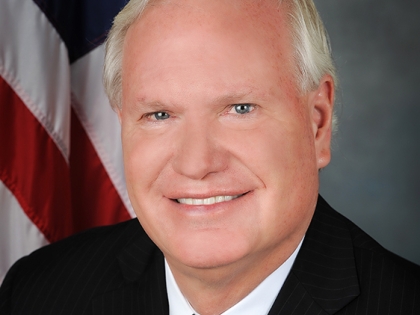
Fed. study may aid ‘Deadman’s Curve’

After three fatal accidents on the Cross Island Parkway and repeated calls for safety improvements, the Federal Highway Administration has indicated it’s studying possible changes to the design of the roadway’s guardrails.
The plan was announced last week by state Sen. Tony Avella (D-Bayside), who has been calling for changes since 2006. Avella got involved that year when he was a city councilman after 24-year-old motorcyclist Eric Arsenault crashed into a guardrail on the parkway and was killed.
The accident site is known as “Deadman’s Curve” and is near Exit 36S toward the southbound Whitestone Expressway. The area dips down quickly around the bend and at night foliage hides the upcoming barrier created by the nearby overpass.
During the day, motorcylists have no trouble making the turn on the parkway, but problems arise after dark.
“While the support beams in the guardrails absorb the impact of the motorcycles that crash into them, they can also impale the cyclists themselves,” Avella said. “Hopefully this study will result in a design that will reduce the chances that this will occur.”
Working with Avella since his son was killed is Chris Arsenault of Medford, LI. “It’s a shame that it took his life for them to finally wake up,” the father said. “I’ve always said there should be two guardrails to take the impact.”
Chris Arsenault believes the single guardrail causes worse injuries by forcing bikers to go over them or to become badly maimed. He and Avella favor a double guardrail, which would be taller and provide more protection for drivers.
The FHWA is conducting a study of fatal motorcycle crashes involving traffic barriers that is scheduled to be completed at the end of 2012. The agency plans to use the results to improve the design of “roadside safety hardware” and offer guidance on making the changes.
“With motorcycling becoming more popular than ever, we need to ensure that our roads are safe for these cyclists to navigate,” Avella said. “I look forward to seeing the results of this study implemented.”
Following Arsenault’s death, the Queens Chronicle discovered an earlier fatality on the same stretch of road. In 2004, Michael Moore, 49, of Springfield Gardens, was missing for 40 days after leaving a party in the Bronx on his motorcycle. A search party finally discovered his body 10 feet from the side of the parkway in tall weeds on the verge.
After that, a flashing warning sign was installed before the curve becomes visible on that side of the road.
After Arsenault’s death, overgrowth was cut down and damaged parkway lights fixed, but there was no change to the guardrail. Although Chris Arsenault had suggested replacing it with a concrete barrier, a spokesman for the state Department of Transportation said that a concrete barrier has no give and would not be a good replacement. He noted that a metal guardrail is more forgiving than concrete.
Meanwhile, the city DOT added yellow 25 mph curve warning signs in advance of the bend, installed additional reflective arrow signs and increased the grass cutting at the accident location.
Nevertheless, in 2010, another man lost his life there. Off-duty Police Officer Philip Clemens, 27, was on his way to a biker party in Astoria, when he lost control of his motorcycle and crashed into the same guardrail that took the life of Eric Arsenault.